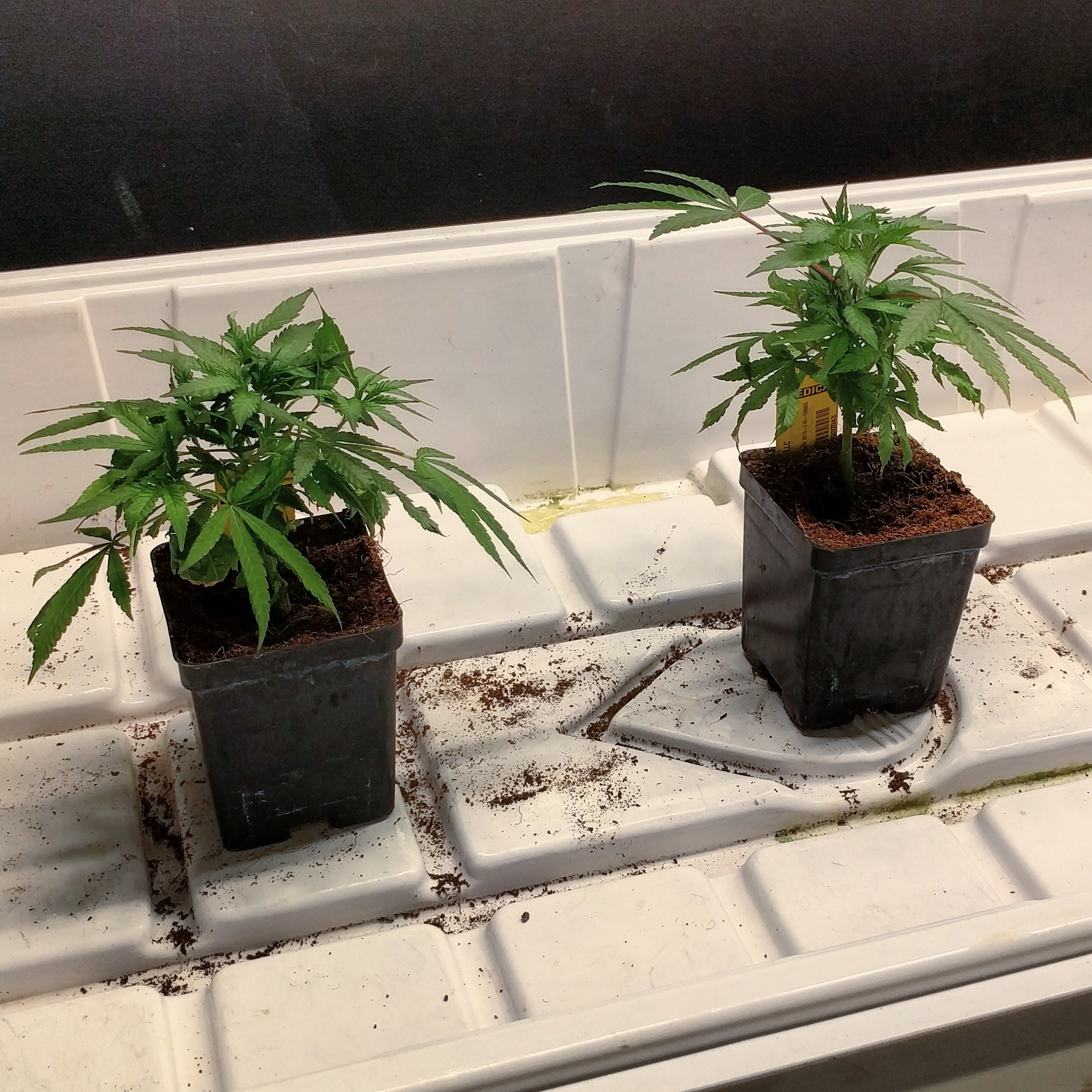Life on the Inside, Part II
Lifting a 14-pound child, radical weather changes, rising levels of acute pain, and emerging chronic fatigue symptoms are changing my daily routine.
This is the second post in a series covering what it’s like to live with Ehlers-Danlos Syndrome (EDS), a complex, life-long genetic condition that often causes serious, chronic pain and frequent subluxations among patients. Granted, pain has a normal place in my life. I plan for it, and always keep medicine on hand; but even though I expected this as the logical evolution of my condition, it doesn’t make it easier to swallow.
Research suggests that while a cure is possible, it isn’t expected to arrive within my lifetime. For now, all I can do is relieve the pain and hope to pass as a normal human being, which is why this entry focuses on pain management; a necessarily major part of my care. (Please note that while I hope this article helps someone, I can only describe my treatment regimen. What works for me may not help you, since the syndrome affects everyone differently.)
The Impact of Chronic Pain
It began more than a decade ago. Frustratingly persistent pain emanated from my kneecap; disrupting sleep patterns and more. I wrote about this in the earlier post, but in case you missed it, these aches and pains were summarily dismissed as “growing pains” by my minimally educated doctor.
However, these routine bouts of pain could only be treated with regular application of Extra-Strength Bengay, rest, and ice packs. The inflammation was localized and could be easily lessened, but the treatment was admittedly severe for any young person. In retrospect, my ongoing self-treatment plan should’ve raised concern. Instead, Doctors ejected me from their office without further investigation.
That’s what angered me most: to be ejected without further thought, because I couldn’t possibly suffer from joint pain as a young person.
Fast forward to 2007, and the pain has slowly become unbearable, having spread to my feet, low-back, hands, neck, and shoulders. In 2008, I slipped and fell while on the job at a Nashville grocery store who subsequently bungled my workers compensation claim. In the wake of this injury, I called several doctors from the list of allowed practitioners only to find most of them had shuttered their offices. (The rest did not treat workplace injuries.) My employer, numb to the potential human resources nightmare, demanded I return to work despite my constant back trouble. In a move that reeked of unfair discipline, I was assigned the store’s most physically taxing jobs.
Looking back, I could’ve easily sued for the care I needed most. But I was a broke, ignorant college student who didn’t understand my legal rights. When referred to a lawyer many years later, I realized the Tennessee Statute of Limitations had long since expired.
Since those days, I’ve been locked in a constant struggle with pain and inflammation that threatens the well being of my physical body. My average day is punctuated by a mixture of dull aches and pointed stabs of acute pain. Often, I’m to blame for the latter, but it doesn’t take much to awaken the monster: take one wrong step, or lift a heavy backpack with suboptimal technique, and I’ll remember that moment for days.
Other times, I can walk miles before it all sets in. That’s one of the frustrating elements of life with hypermobile joints: every trip is a gamble.
Advocating For Myself
From 2008—2010, I was under my own care, drinking two beers and taking prescription-levels of Ibuprofen every night. Anything less, and I couldn’t sleep. My case was lost between the expansive cracks that stretch across America’s entire medical system. Proper medical care is expensive, and money was scarce. Plus, before the Affordable Care Act, no insurance underwriter would cover expenses related to my ongoing medical care.
If you’re reading this in disbelief, I understand. Perhaps you thought I was always moneyed. The truth is radically different.
In mid-2007, I left home with nothing but a hundred-dollar bill in my pocket. My bank account had been drained by relatives who insisted my work pay for their obsessions. I finally snapped, leaving behind a lucrative teaching job that any normal high schooler would envy, and a successful small business technical consulting firm. But it’s hard to maintain financial buoyancy when profits are constantly siphoned off by someone else.
From 2010 onwards, we used a portion of our newfound financial cushion to acquire proper health insurance. I selected a new general practitioner after our move to Chicago, and set up appointments with a handful of specialists. Unfortunately, ignorance and stupidity can take up residence anywhere, and it was an additional four years before I saw a doctor who accepted my claims as serious diagnostic evidence.
During the latter portion of 2014 and into the following year, I spent hours with my rheumatologist, pouring over my unique blend of symptoms. She tested for the primary suspects, including Rheumatoid Arthritis. None of the tests were conclusive, but at least she provided the energy to carry on.
Though I was swimming in a sea of opioid pills, acetaminophen, and muscle relaxants, the pain persisted. And that’s not all: many of the drugs had glaring side effects, including caffeine intolerance, and as I would learn late one night before an important conference talk, panic attacks.
If I drank a beer, I couldn’t take the opiates. And, as I also discovered during the 2015 Nodevember conference, a single cup of regular coffee was enough to interact with the muscle relaxer, resulting in hours of dizziness.
With adequate treatment nowhere to be found, I stepped on stage with a splitting headache to deliver my presentation.
Was this Western Medicine’s only solution? If so, I would be better off as my own advocate. Sure, high doses of Ibuprofen and alcohol weren’t the answer, but they were quickly becoming the only viable option. Or so I thought.
Breaking the Rules
Those who know me understand my affinity for bending the rules. I never break them outright, at least not on the first attempt, but slight modifications are perfectly acceptable.
Last summer during a routine appointment with my rheumatologist, I realized that modern medicine had failed. It was time to modify the rules, so I mentioned off-hand that medical Cannabis could be a valid solution. She immediately dismissed my inquiry, citing that we still have much to learn about the medicinal effects of the plant, and eventually taking a stance even harsher than that of the National Institute of Health.
I acknowledge the potential harm of Cannabis’ psychoactive ingredients, but pain was still a part of my daily routine, and she, even after many visits and countless tests, hadn’t yet provided a viable option.
It wasn’t long before I began picking up plastic baggies of pungent marijuana every week. My dealer even offered delivery, making them far more reliable than my doctor. The remaining oddity in my life was how I procured the product: I was obtaining a life-enhancing, pain-reducing drug via cash-only transactions in a darkened alley.
As a child of the D.A.R.E. era, it was difficult to reason with my use of an illegal, Schedule I controlled substance regardless of the health benefits. Despite the war inside my head, I couldn’t deny that it was helping: in fact, it was the only thing that would lessen the pain, and so in my late 20’s, I decided to become a sensible stoner.
This may be a shocking revelation for some of you, especially those who watch my life and work from afar via this blog and public social media. If you’re concerned, I have a confession to make: except while driving, I’ve been under the influence for most of this last year. If you didn’t guess I was toking then, there’s no place for outrage now.
Moving On
I’m writing to you from our new apartment in Denver, Colorado. Earlier this afternoon, I walked into a dispensary for my first serious purchase since we’ve been in the state. The staff, consumers themselves, helpfully recommended a handful of strains that will, during the day, relieve pain without disrupting higher mental function. At night, I have options to relieve pain and help me stay asleep.

Inside, the facility has more in common with an Apple Store than a marijuana dispensary. It has all the trappings of a government-sanctioned professional venture, and is a very different experience when compared to purchasing on the black market. Maybe you now understand why Colorado is home to the legal Cannabis revolution.
Whether you approve of marijuana consumption or not, this is the future. Patients like myself have waited for safe access too long. The moral sky didn’t fall in Colorado, Oregon, or Washington; and the potential tax revenue is a point no state should ignore.
Normalization
I can’t keep this to myself, and so, I write. This plant, effectively criminalized since 1937, is my medicine. It’s expensive, yes, but nothing like some of the prescription drugs on the market. It should be kept out of reach of children, just like other prescription drugs on the market. But make no mistake, it is here on earth for a purpose.
It helps those with frustrating conditions that have been largely ignored by medical science, and like myself, many go to the illegal market; not to get high, but to feel pain free for even a moment.
Speaking frankly, it should be legalized. But until then, it’ll remain a polarizing social issue, took up by politicians to advance their own causes, while patients with unthinkable conditions fall through the cracks.
EDS has took over a large part of my life. And now, living in Colorado, I have a chance to reclaim a portion of what I lost. If you’re suffering, I hope you can too.
